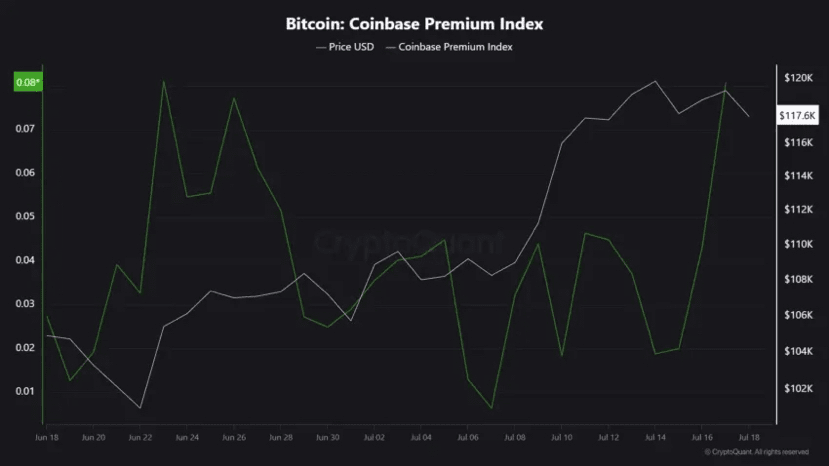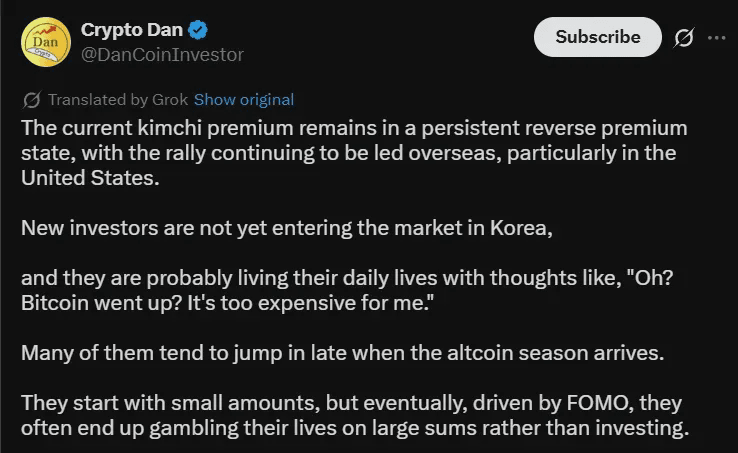Bitcoin reached its historical highs consecutively in July, but two key indices indicate that this rise is primarily driven by the U.S.
The increasing divergence between trading activity in the U.S. and Korea raises questions about global participation and market risks.
Increase in Coinbase Premium value with inflows
The Coinbase Premium index, which tracks the price difference between Bitcoin on Coinbase (USD) and Binance (USDT), rose throughout July. This premium reached 0.08%, indicating strong buying pressure in the U.S.
Coinbase serves institutional and individual investors in the United States. A rising price premium often reflects intense accumulation by U.S. whales, ETF providers, or companies.
This aligns with recent inflows exceeding $14.8 billion into U.S. spot Bitcoin funds, propelling Bitcoin to an all-time high near $123,000. These movements confirm that U.S. institutions are leading the current cycle, supported by favorable regulatory conditions and ease of capital access.

The Bitcoin market in Korea has a different story.
In contrast, the Korea Premium index, also known as the 'Kimchi Premium', fell below zero. This index tracks the price difference between Bitcoin on Korean exchanges (such as Upbit and Bithumb) and global platforms.
As of mid-July, the premium value ranged around -1.0%, indicating that Bitcoin trading has become cheaper in South Korea. The negative Korean premium suggests weak domestic retail demand, with few new investors entering the market.
In previous bull markets (2017, 2021), Korea experienced repeated spikes in stock prices of 10% or more, driven by retail speculation frenzy. However, this dynamic is absent today.
Why is this discrepancy important?
The divergence of premium stock indices reveals that the current Bitcoin price rise is not globally balanced. This surge is concentrated in the U.S., with declining enthusiasm among retail traders in one of Asia's most active markets. Historically, broad retail participation has supported and extended bull markets.
Without that, there is a risk that the rise becomes heavily concentrated at the top, relying entirely on institutional flows. This may also affect the momentum of alternative currencies, which often depend on liquidity in Korean exchanges and retail-driven narratives.

The shift of the premium index in Korea to positive indicates a return of retail investors, which may boost the next phase of Bitcoin's rise. Until then, the Bitcoin price trend is likely to remain focused on the United States, led by ETFs, companies, and wealth managers, rather than global retail investors.